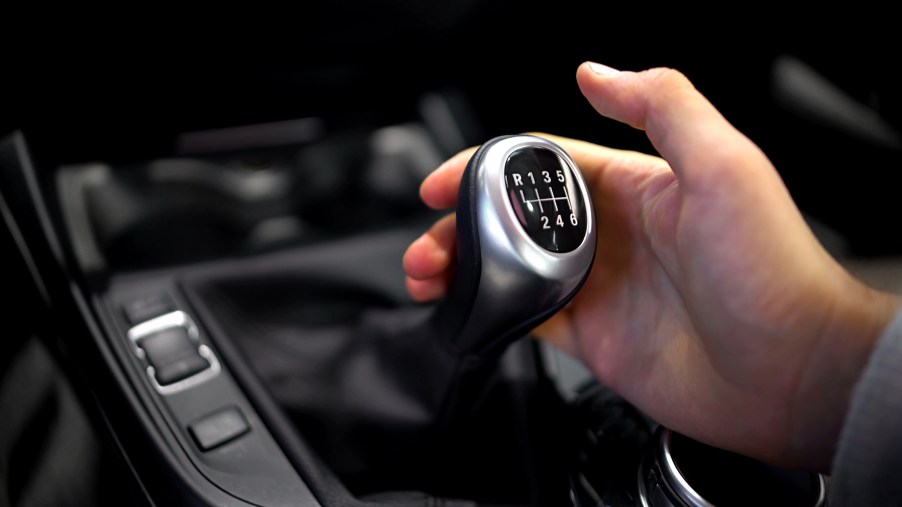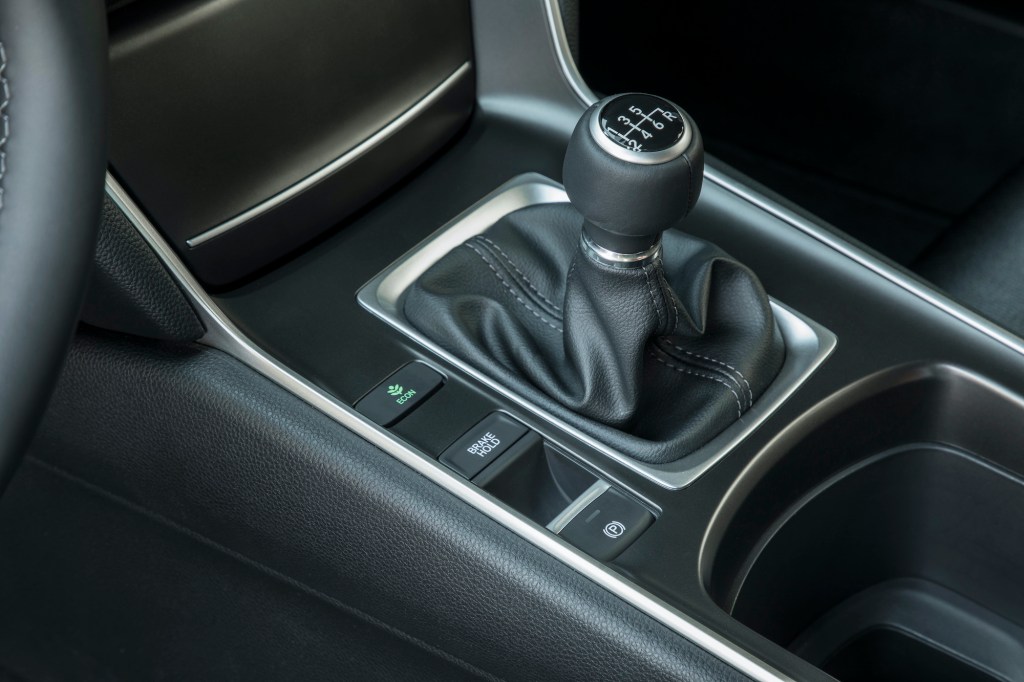
What Is ‘Rev Matching’ and Is It Really Necessary?
Driving a car with a manual transmission can be tricky, especially if you’re starting to learn. Learning when to upshift and downshift can get a little bit confusing at first, but with the proper time and patience, you’ll get it. Soon enough, you’ll be rev-matching like the pros. But what is rev-matching, and is it really necessary?
Also known as “heel-toe”
When you drive a manual transmission car and start to slow down to go into a turn, it’s a good idea to downshift and slow the car down via the engine. It’s also necessary because when you come out of the turn, you’ll need to be in a lower gear to accelerate back up to speed. However, you’ll find that when you downshift into a lower gear and lift off the clutch, the car will bog, and the transition won’t be smooth; that’s when rev-matching comes into play.
According to DrivingFast.net, rev matching, also known as “heel-toe downshifting,” is when you raise the engine speed to match the speed of the lower gear when shifting into it, effectively creating a nice smooth transition. The process sounds easy in theory, but it’s tough when it comes to actual execution.

The rev-matching process
If you want to start rev-matching when you downshift, you need to follow a few steps:
- As you approach a corner, slow down to a lower speed in order to safely make the turn
- Press the clutch in. When doing so, the engine RPMs will drop suddenly because the clutch is disengaged
- Press on the gas pedal and “blip” the throttle, or bring the engine rpm up back up to increase the engine speed
- Shift into the lower gear and lift off the clutch pedal like normal. Ideally, the engine speed should match the lower gear you’re shifting into. Hence the term “rev-matching.”
Trust us, it takes a lot of practice to do it correctly, and you likely won’t get it close to perfect your first time out. However, just like learning to drive stick, with enough time and patience, you’ll get it. Or you can always buy a car like the Nissan 370Z or Honda Civic Type R, which have rev-matching downshift features that do the process automatically for you—no need to blip the throttle, just downshift and go.
Why is rev matching important?
Rev matching isn’t just for the pro racecar drivers — although it really does help when you are driving on the track – as it can be beneficial for everyday driving as well. Remember when we said the car lurches and bogs when you downshift without matching the engine rpm speed? Well, that actually causes harm to your engine and transmission in the long run.
Rev matching can help in the following areas:
- Reduce engine stress and fatigue
- Prevent forward weight transfers that can upset the car when you’re in a corner
- Reduce engine braking
- Reduce chances of wheel lock
If anything, know that getting the rev-matching technique down can be beneficial to your car in the long run and can prevent some costly driveline and engine repairs in the future.



